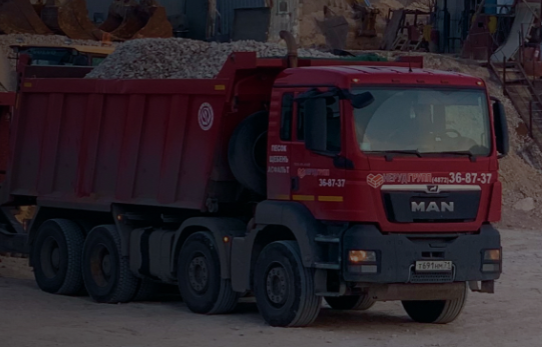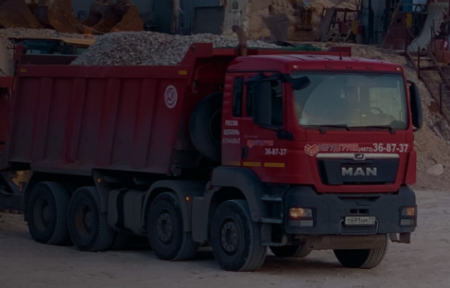Dolomite rubble
Category:
#2831
Description
This is one of the varieties of non-metallic building material. This type of crushed stone is made from dolomite by crushing and processing sedimentary rock. It contains 95% carbonate and 5% calcite. It is a colorless material, but it can also be dominated by shades of white. In the presence of clay or iron hydroxide, it acquires a yellowish tint. If manganese or barium oxide is present, the dolomite crushed stone acquires a bluish-gray tone. At the break, the stone is matte. There may also be transitions with a glassy or pearlescent sheen. Dolomite crushed stone is used in road construction, in the production of building materials, for septic tanks and other purposes. There are 3 groups of fractions: the first is 5-20 mm, the second is 20-40 mm, and the third is 40-70 mm.
Technical characteristics and application of dolomite crushed stone
To increase the resistance to frost and moisture, the surface is treated with a modified solution containing phosphoric acid and salts.
The maximum strength grade is M1200);
Density – 2650 kg/m3;
Frost resistance - up to F150;
Bulk density – 1300-1400 kg;
Grain size (grain shape) is the inclusion of lamellar and needle–shaped grains up to 10-35%. High–grade stone is used in road construction, and up to 10-15% is used for the production of building mixes.%;
The level of dust particles is 0.25% (with an acceptable level of up to 2%).
Unlike limestone rubble, which is sometimes confused with the material, dolomite is characterized by increased strength due to the magnesium content. That is why it has a wider scope of use.
Scope of application
The material is used in the construction and arrangement of various structures and facilities:
interstitial floors;
beams;
a ribbon, monolithic foundation;
cast floors;
foundations on concrete piles;
grillages;
various types of embankments and backfills;
highways;
Technical characteristics and application of dolomite crushed stone
To increase the resistance to frost and moisture, the surface is treated with a modified solution containing phosphoric acid and salts.
The maximum strength grade is M1200);
Density – 2650 kg/m3;
Frost resistance - up to F150;
Bulk density – 1300-1400 kg;
Grain size (grain shape) is the inclusion of lamellar and needle–shaped grains up to 10-35%. High–grade stone is used in road construction, and up to 10-15% is used for the production of building mixes.%;
The level of dust particles is 0.25% (with an acceptable level of up to 2%).
Unlike limestone rubble, which is sometimes confused with the material, dolomite is characterized by increased strength due to the magnesium content. That is why it has a wider scope of use.
Scope of application
The material is used in the construction and arrangement of various structures and facilities:
interstitial floors;
beams;
a ribbon, monolithic foundation;
cast floors;
foundations on concrete piles;
grillages;
various types of embankments and backfills;
highways;

Email
Phone number
Connection will be made via internet - no charges apply. Microphone access required.
Adding to Favorites
Your comment:

